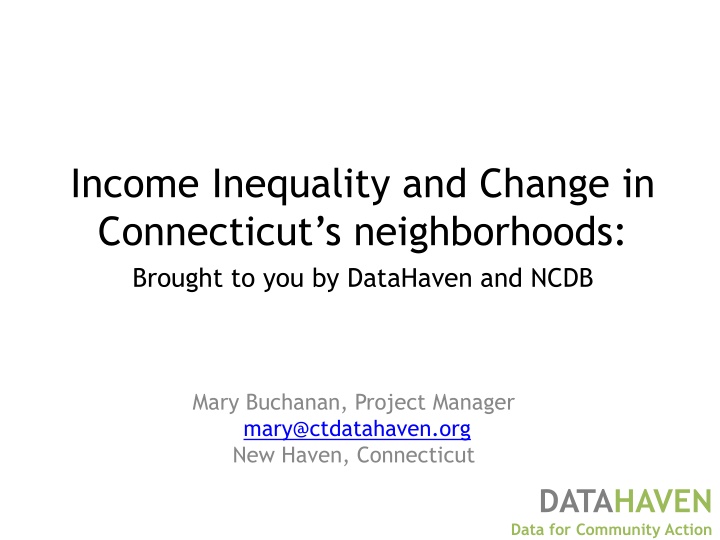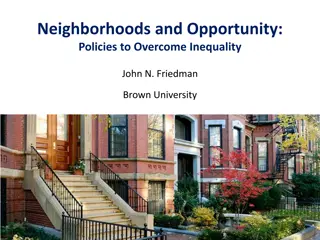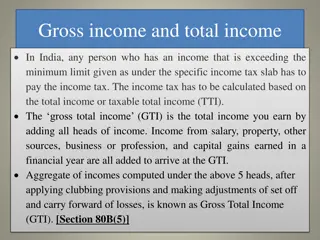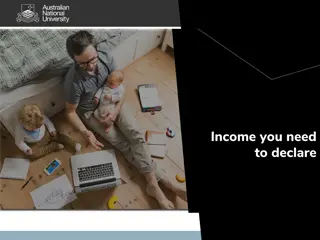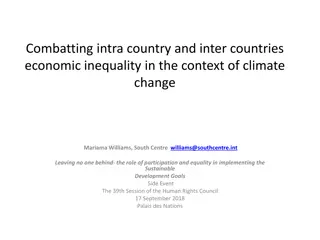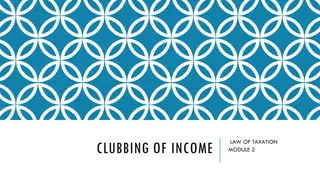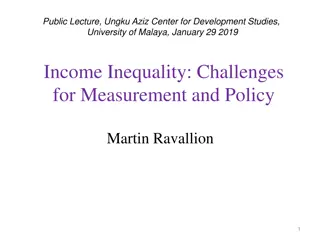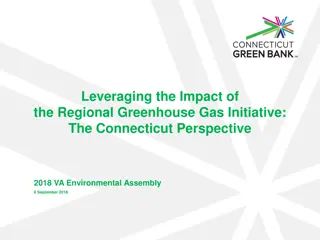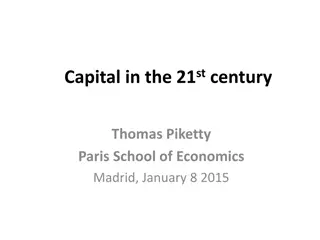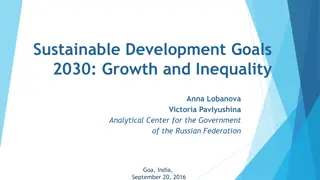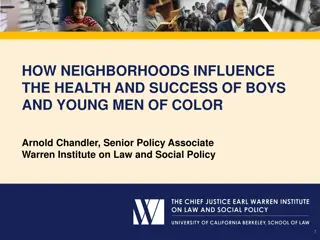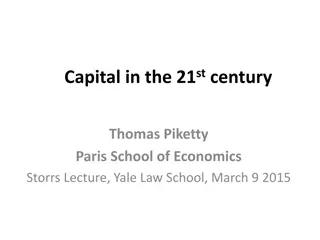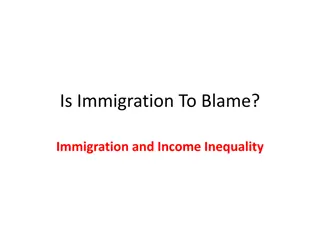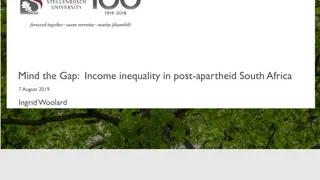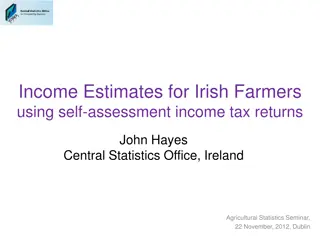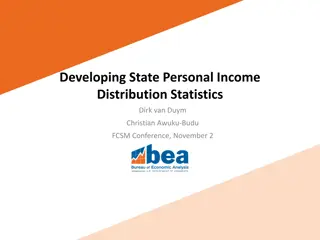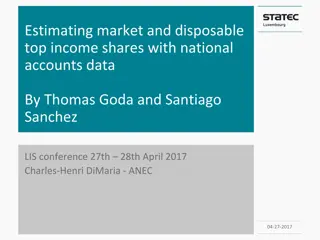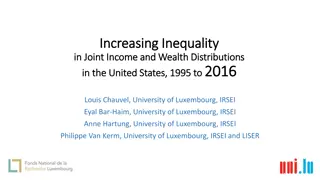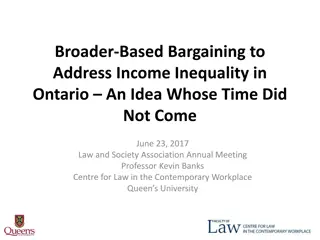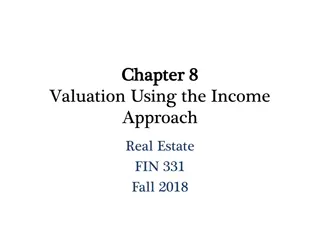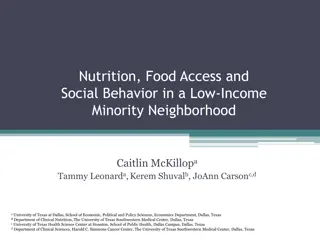Income Inequality & Change in Connecticut's Neighborhoods
This report by DataHaven and NCDB delves into income inequality and neighborhood segregation in Connecticut, highlighting disparities in economically and racially segregated areas. Findings reveal insights on affluent, white neighborhoods contrasted with poor, non-white neighborhoods, impacting over 13% of the state's population. Segregation patterns are explored, showcasing how urban, suburban, and rural areas differ in wealth distribution and racial composition.
Download Presentation

Please find below an Image/Link to download the presentation.
The content on the website is provided AS IS for your information and personal use only. It may not be sold, licensed, or shared on other websites without obtaining consent from the author.If you encounter any issues during the download, it is possible that the publisher has removed the file from their server.
You are allowed to download the files provided on this website for personal or commercial use, subject to the condition that they are used lawfully. All files are the property of their respective owners.
The content on the website is provided AS IS for your information and personal use only. It may not be sold, licensed, or shared on other websites without obtaining consent from the author.
E N D
Presentation Transcript
Income Inequality and Change in Connecticut s neighborhoods: Brought to you by DataHaven and NCDB Mary Buchanan, Project Manager mary@ctdatahaven.org New Haven, Connecticut DATAHAVEN Data for Community Action
Neighborhood Segregation Summary High number of neighborhoods that are both economically segregated areas AND racially segregated 2x more affluent & segregated neighborhoods than poor & segregated neighborhoods in CT Racially and economically segregated neighborhoods more highly concentrated in CT than in most other large metro areas DATAHAVEN Data for Community Action
Neighborhood Segregation - Methodology Census tracts defined as: Racially Concentrated Area of Affluence (RCAA) 90% or more of population is white Median household income is at least 4 times federal poverty line (FPL) (adjusted for cost of living) Racially Concentrated Area of Poverty (RCAP): Less than 50% of population is white 40% or more of population has a household income below FPL Near-Racially Concentrated Area of Poverty (Near RCAP): Less than 50% of population is white 20% or more of population has a household income below FPL Based on methodology from University of Minnesota DATAHAVEN Data for Community Action
Neighborhood Segregation Findings 13% of CT population lives in segregated neighborhood 3% poor, majority non-white vs. 10% wealthy, majority white Affluent, white neighborhood household income = $120,008/yr ~ 5.5x more than poor, non-white neighborhood income ~1.75x more than state average DATAHAVEN Data for Community Action
Neighborhood Segregation Findings RCAPs in urban centers RCAAs in peripheral suburban towns Rural areas devoid of segregated areas RCAAs and RCAPs rarely border each other Fairfield County 7x more wealthy neighborhoods than poor ones DATAHAVEN Data for Community Action
Neighborhood Segregation Findings Population in Economically and Racially Segregated Areas 13% of CT population in segregated areas vs. 6% national metro sample Fairfield Co. & Hartford have highest shares of population in rich, white neighborhoods 17% and 13% respectively Hartford & New Haven have relatively high shares of population in poor, non- white neighborhoods 5% and 5% respectively 15 metros 3% 3% 10% **CT 3% St Louis 3% 7% Phoenix 6% 2% Philly 6% 5% **New Haven 5% 5% Minneap. 2% 7% **Hartford 5% 13% 8% Detroit 5% 1% **Fairfield Co. 17% 1% Boston 8% 0% 20% 40% 60% 80% RCAA 100% RCAP Non-Segregated DATAHAVEN Data for Community Action
Neighborhood Segregation Findings Pct of region's top-earning households in racially concentrated affluent areas Higher concentration of households earning at least $200,000/yr in CT than in other metros 27% of top-earning households in CT live in neighborhoods that are wealthy and majority white Compared to 10% in national metro sample Highest concentration of wealthy households in RCAAs in Fairfield County and Hartford DATAHAVEN Data for Community Action 15 metros 10% **CT 27% St. Louis 23% Phoenix 8% Philly 16% **New Haven 14% Minneap. 20% **Hartford 26% Detroit 17% **Fairfield Co 37% Boston 19%
Neighborhood Segregation Findings Some CT cities have high shares of poor people also living in concentrated poverty neighborhoods ( Double Jeopardy ) In CT, 15% of people in poverty live in neighborhoods that are poor and racially segregated Compared to 12% in national metro sample High concentration of poor in RCAPs in Hartford and New Haven Pct of region's poor residents living in RCAPs 15 metros 12% **CT 15% St. Louis 13% Phoenix 20% Philly 22% **New Haven 18% Minneap. 10% **Hartford 22% Detroit 25% **Fairfield Co 8% Boston 5% DATAHAVEN Data for Community Action
Neighborhood Segregation - Presentation and Coverage Interactive map of neighborhoods on CartoDB CT Mirror: Connecticut has more concentrated poverty (and wealth) than most metros New Haven Register: Data show Connecticut remains segregated, but work being done to lessen it DATAHAVEN Data for Community Action
Neighborhood Income Change - Summary From 1980 to 2013 The share of CT residents living in middle-income neighborhoodsdecreased The share of CT residents living in areas of concentrated wealth or poverty grew By 2013, of CT residents, 25% lived in extreme-income neighborhoods Very Affluent, Concentrated Poverty DATAHAVEN Data for Community Action
Neighborhood Income Change - Methodology Census Tracts categorized by population in poverty and average family income Very Affluent neighborhood: average family income (AFI) for census tract is at least 1.5x state average Concentrated Poverty: at least 20% of population lives in poverty Near State Average: AFI is between 0.8 and 1.25x state average Neighborhood Change Database provided data for 1980, 1990, 2000 ACS provided data for 2013 DATAHAVEN Data for Community Action
Neighborhood Income Change - Findings From 1980 to 2013, a 28% decrease in percent of CT residents living in neighborhoods with income near state average 56% of all residents in 1980 vs. 40% in 2013 A 30% increase in percent of CT residents living in neighborhoods with extreme income 19% of all residents in 1980 vs. 25% in 2013 DATAHAVEN Data for Community Action
Neighborhood Income Change - Findings Extreme-income neighborhood change, 1980 to 2013 47% increase in percent of CT residents living in very affluent neighborhoods 7% of all residents in 1980 vs. 10% in 2013 20% increase in percent of CT residents living in concentrated poverty neighborhoods 12% of all residents in 1980 vs. 15% in 2013 A 66% increase in percent of poor CT residents living in concentrated poverty neighborhoods 3% of all residents in 1980 vs. 4% in 2013 DATAHAVEN Data for Community Action
Neighborhood Income Change - Findings Urban and Suburban areas impacted by change Growth of very affluent neighborhoods in Fairfield County and other peripheral suburban areas Growth of concentrated poverty in cities and inner suburbs Neighborhood income in rural areas stable from 1980-2013 DATAHAVEN Data for Community Action
Neighborhood Income Change - Presentation and Coverage CT Mirror: In last 35 years, a significant drop in middle-income neighborhoods Interactive map of neighborhoods created by CT Mirror Interactive regional comparison created by CT Mirror DATAHAVEN Data for Community Action
Neighborhood Income Follow-ups Potential extensions of these analyses include: Characteristics of Rebounding neighborhoods In depth regional analyses for community assessment reports - 2016 Community Index Greater New Haven and Lower Naugatuck Valley regions Other suggestions ? Questions ? Contact Mary at mary@ctdatahaven.org DATAHAVEN Data for Community Action
